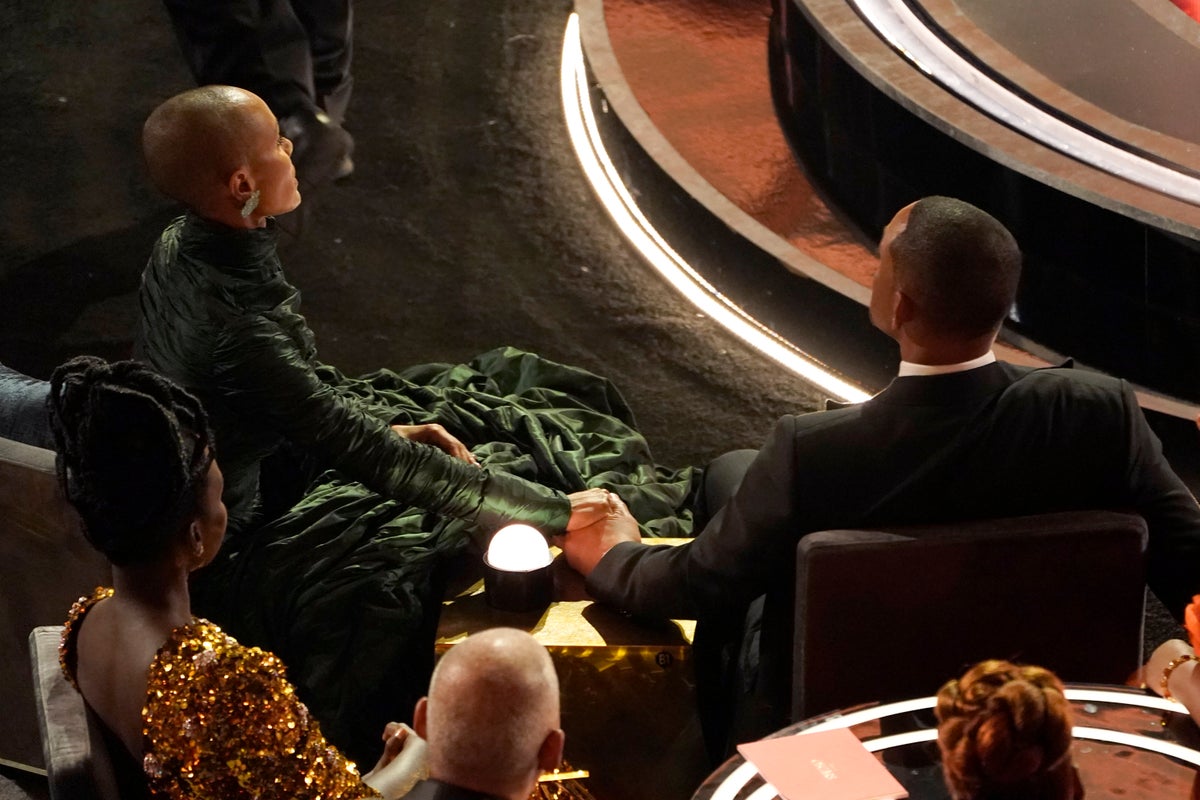
Millions of people around the world are affected by alopecia areata, an autoimmune disorder that causes hair loss and was thrown into the spotlight after actor Will Smith slapped comedian Chris Rock at the Oscars.
The slap stunned millions, drew widespread condemnation and earned Smith a 10-year ban from the ceremony after he apologized. It came after Rock threw a pointed joke that some felt was insensitive at Jada Pinkett Smith about her hair loss.
Advocates said at the time that increased awareness about the condition, which is fairly common but little discussed, could be a small bit of good to come out of the blowup. Wednesday, Jada Pinkett Smith, dedicated an episode of “Red Table Talk” to the disorder.
Here’s a look at the disorder, and how hair is tied up with beauty and race, culture and self-identity:
___
WHAT CAUSES ALOPECIA?
Alopecia areata can make hair fall out of the scalp in patches and also affect other parts of the body, like eyebrows and nose hair.
Alopecia can come on quickly, is unpredictable and can be incredibly tough to deal with mentally, said Brett King, a hair loss expert at Yale Medicine, told The Associated Press in March.
“Imagine if you woke up today missing half of an eyebrow,” he said. “That unpredictability is one of the things that’s so mentally treacherous and awful because you have no control of it ... it’s a disease that strips people of their identity.”
While seldom discussed, it’s actually fairly common: the second biggest cause of hair loss, after male or female pattern balding. About 2% of people have it. It’s not physically painful, in some cases it spontaneously goes away and it can be treated.
___
HOW DOES IT AFFECT WOMEN? WHAT ABOUT KIDS?
While it’s unclear if Rock was aware of Pinkett Smith’s diagnosis, hair is a large part of anyone’s appearance, and for women it’s bound up with cultural concepts about what makes them look feminine.
“Most women are expected to have good hair,” said William Yates, a Chicago-based certified hair loss surgeon. “They’re well aware that men lose their hair and ‘bald gracefully,’ so to speak, but a female losing their hair is devastating.”
The condition also tends to hit people when they are relatively young. Most are diagnosed before age 40, and about half of them are children when the disorder first appears, said Christopher English, a board-certified dermatologist for Intermountain Healthcare in Salt Lake City.
Having the condition is especially tough for teenagers, for whom appearance anxiety and peer pressure are often already at an all-time high, said Gary Sherwood, communications director at the National Alopecia Areata Foundation.
Rio Allred, a 12-year-old girl with the disorder, took her own life after being bullied at school in Indiana. Her mother appeared on “Red Table Talk” to talk about the loss less than two weeks before the Oscars.
Some studies have also pointed to the disease being more prevalent among Black and Latino people, Sherwood and Yates said. The National Institutes of Health states it affects all racial and ethnic groups, men and women.
Rock’s joke was “not unusual,” Sherwood said. “This has been around as long as there have been humans on Earth ... for centuries people would not talk about it.”
__
WHAT’S IT LIKE TO HAVE ALOPECIA?
Rock’s joke was tough to hear for New York interior designer Sheila Bridges.
She spoke to Rock for his 2009 documentary “Good Hair” about the importance of hair in Black culture.
For many Black Americans, grooming and styling choices are intertwined with a desire to buck what is considered normal or acceptable by wider society. From Afros and cornrows to wigs and hair extensions, Black hair can be more than just style statements.
In her interview, Bridges talked about the shame and humiliation of losing her hair to the disease, how her hairstyle is intertwined with her racial identity and how the loss of her hair affected her sense of femininity and social currency.
The Oscars slap left Bridges with conflicting emotions: She condemned Smith’s assault on Rock, sympathized with Pinkett Smith and was deeply disappointed in Rock.
“It is not easy as a woman to navigate life without any hair and a society that is obsessed with hair,” Bridges said.
She doesn’t wear wigs because she doesn’t want to, and also hopes to normalize and de-stigmatize the appearance of bald women.
But even a decade after she decided to go bald in public, Bridges said it’s still difficult for some to accept: “I rarely make it through the week without someone saying something that’s very, very insensitive.”
Hair in general can already be a fraught landscape for Black women, who have been expected for generations to alter their natural hair texture to fit a white standard of beauty. Black women are 80% more likely to change their natural hair to meet social norms at work, according to a 2019 study by the Dove personal care division of the Unilever USA company.
Black students are also far more likely than other students to be suspended for dress code or hair violations, according to the research that helped convince the U.S. House to vote to prohibit discrimination based on natural hairstyles in March.
“The only good thing that can come out of all this is that alopecia is front and center,” Bridges said about the Oscars slap.







